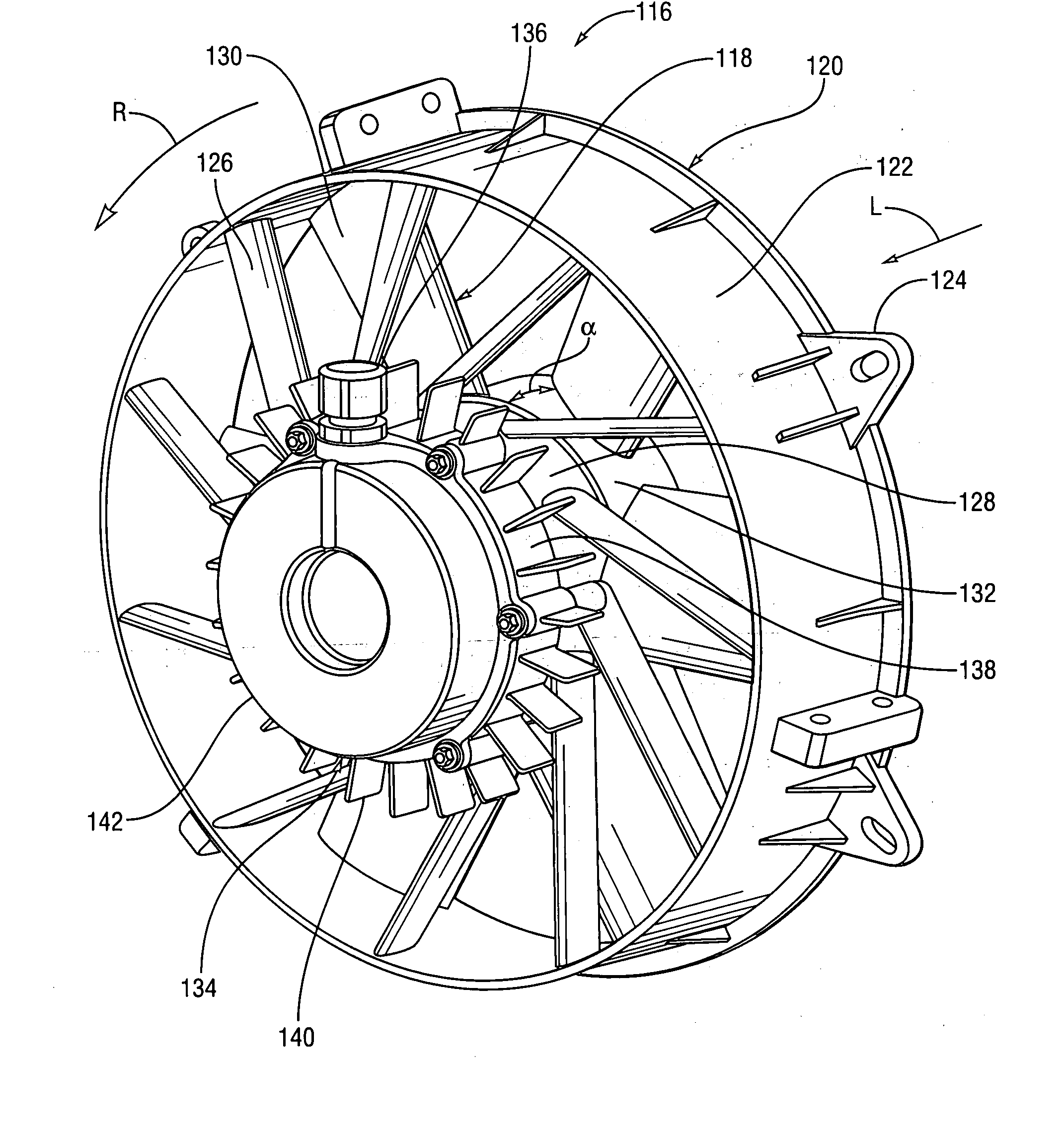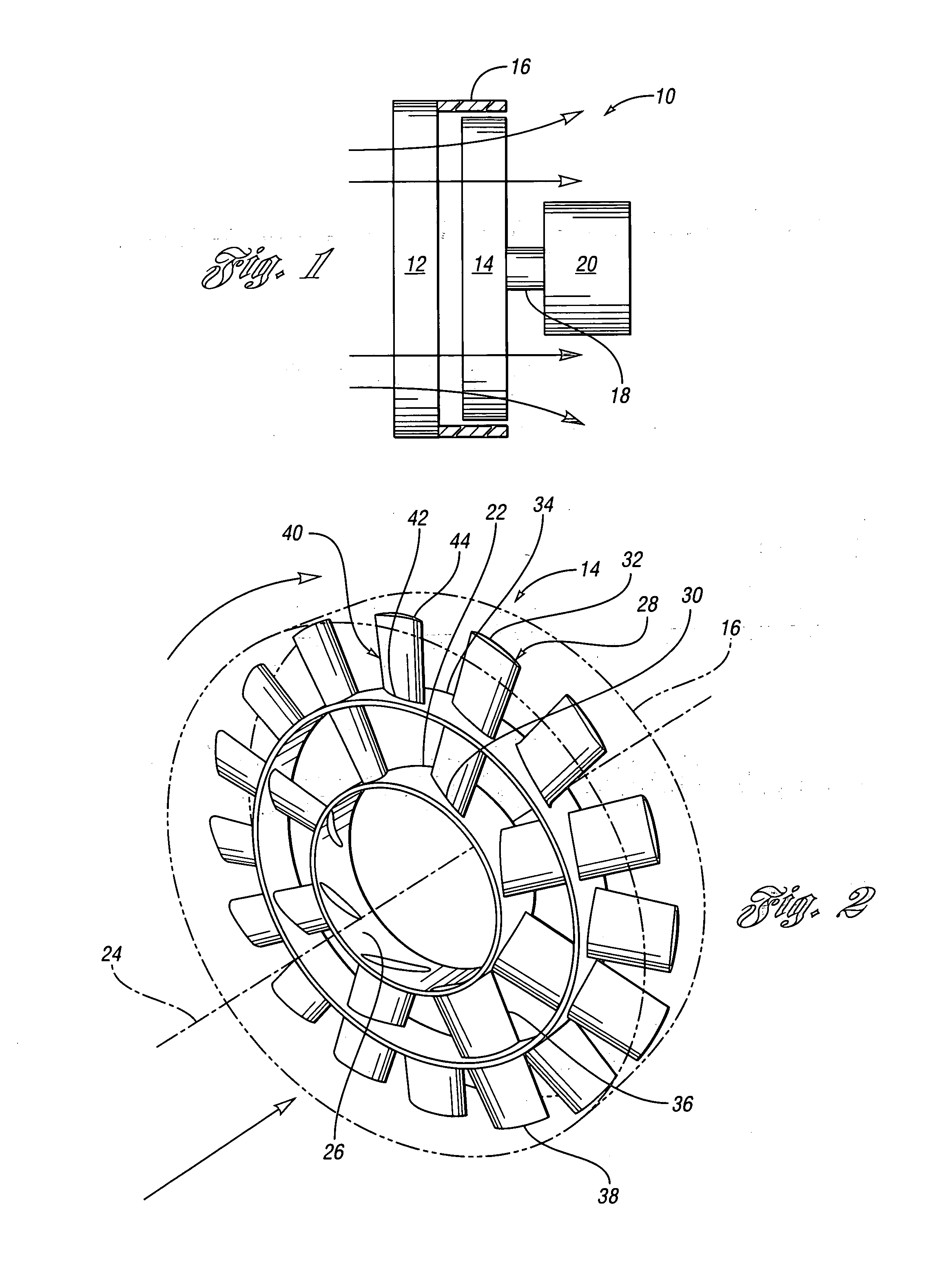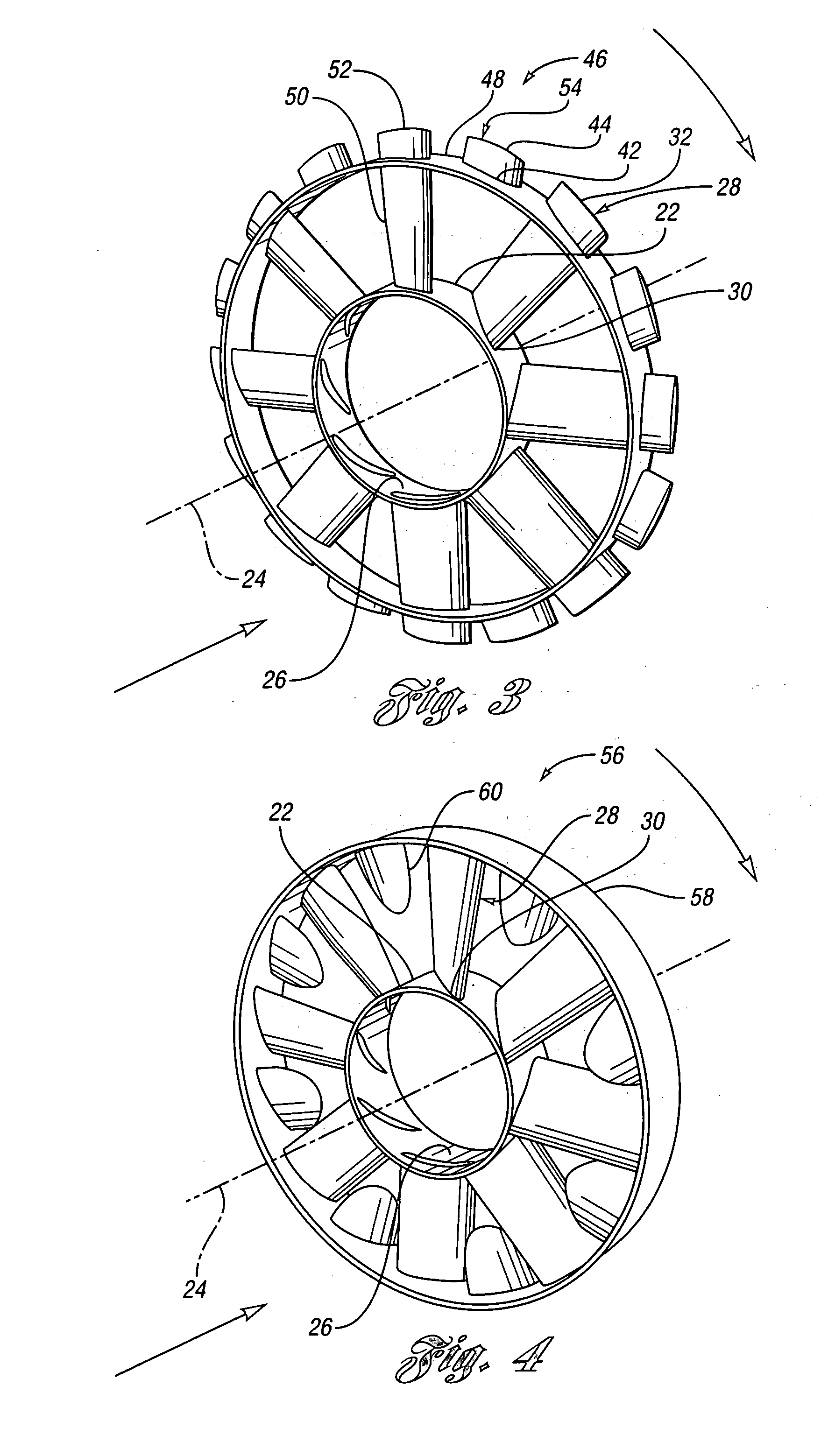Rotary axial fan assembly
a technology of rotary axial fans and fan assemblies, which is applied in the direction of machines/engines, mechanical equipment, liquid fuel engines, etc., can solve the problems of increased sound level of the fan assembly, lack of performance and efficiency of conventional rotary axial fans for internal combustion engine cooling systems, etc., and achieves the effect of reducing sound output and enhancing fluid flow efficiency
- Summary
- Abstract
- Description
- Claims
- Application Information
AI Technical Summary
Benefits of technology
Problems solved by technology
Method used
Image
Examples
Embodiment Construction
[0025] With reference now to FIG. 1, an internal combustion engine cooling system is illustrated schematically and indicated generally by reference numeral 10. The system includes a radiator indicated by reference numeral 12 that receives heated coolant from the internal combustion engine (not shown) and transfers heat from the coolant to air that passes therethrough. Air is passed through the radiator by movement of the vehicle and air is forced by a rotary axial fan 14. Commonly, an external shroud 16 is provided to limit the moving of air to travel in an axial direction. The shroud 16 is mounted to the radiator 12. The fan 14 is mounted to a drive member 18, which is driven by a motor 20. The motor 20 drives the drive member 18 and fan 14 for forcing air through the radiator 12, shroud 16 and fan 14 thereby cooling coolant that is passed through the radiator 12.
[0026] Of course, the drive member 18 can be driven directly by the internal combustion engine by a belt drive system, ...
PUM
 Login to View More
Login to View More Abstract
Description
Claims
Application Information
 Login to View More
Login to View More - R&D
- Intellectual Property
- Life Sciences
- Materials
- Tech Scout
- Unparalleled Data Quality
- Higher Quality Content
- 60% Fewer Hallucinations
Browse by: Latest US Patents, China's latest patents, Technical Efficacy Thesaurus, Application Domain, Technology Topic, Popular Technical Reports.
© 2025 PatSnap. All rights reserved.Legal|Privacy policy|Modern Slavery Act Transparency Statement|Sitemap|About US| Contact US: help@patsnap.com



